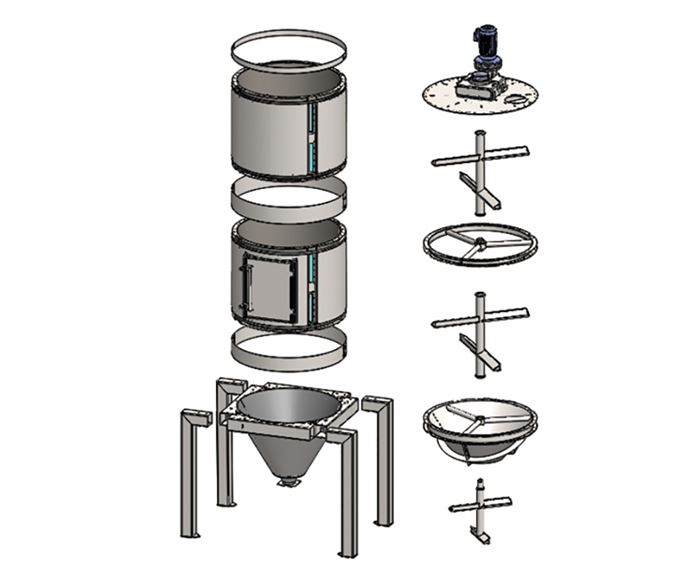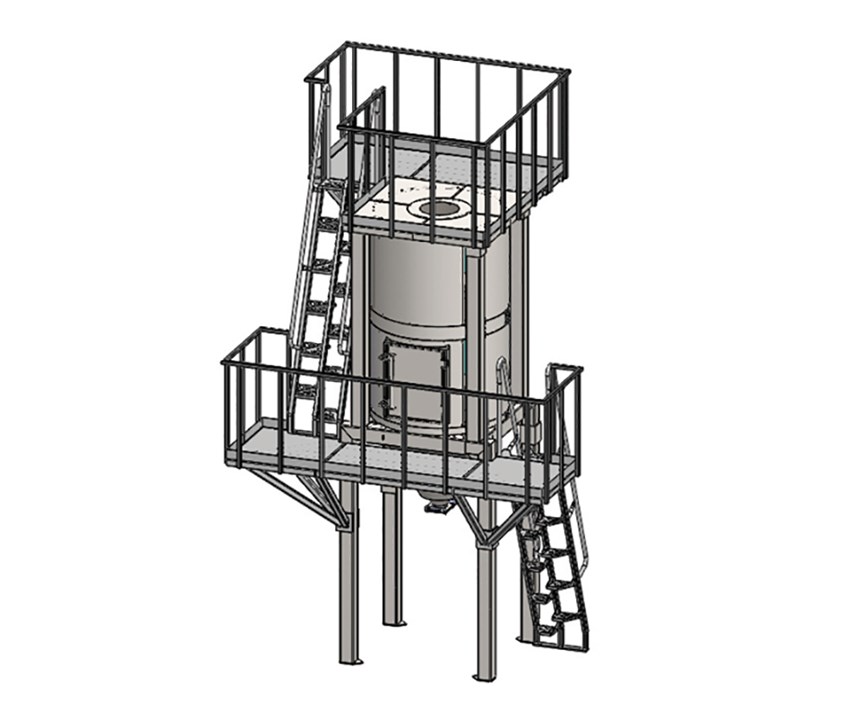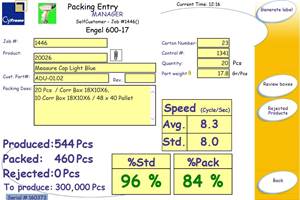Modular Drying Hopper Is Expandable And Convertible to a Crystallizer
Unlike typical welded construction, bolt-on sections provide flexibility and easier transport and installation.
PET processors and recyclers, as well as molders of large parts from materials that may attract moisture, have a number of new and highly cost-effective options:
Expand a drying hopper’s capacity after installation;
• Convert a drying hopper to a PET crystallizer after installation;
• Expand the crystallizer’s capacity at a later date.
These novel capabilities are afforded by a new development from Wittmann Battenfeld, Inc., Torrington, Conn. The company is just now introducing a totally modular drying hopper/crystallizer that was conceived, designed, and built entirely by the U.S. operation of the Austrian Wittmann Group.
This development was revealed exclusively to Plastics Technology at Wittmann’s October Open House and Innovations Workshop in Torrington. According to Michael Stark, divisional manager for material handling and auxiliaries, this development reflects the company’s desire to push more strongly into blow molding and extrusion.
Nicholas Paradiso, engineering manager for that division, points out that the modular units also have potential applications in hot-air drying for large injection molded parts of polyolefins, such as auto bumpers or fascias, that require removal of surface moisture from pellets or preheating the pellets for more uniform processing.
EXPANDABLE & CONVERTIBLE
Paradiso explains that the building-block concept of the new units starts with the base cone, a 500-liter section that is welded to the base frame. The legs can be removed or extended as needed to accommodate gaylord fill height or mezzanine mounting. The base cone contains an internal process-air diffuser that is bolted in, rather than welded as is typical in the industry, so that it can be removed if the system is later converted to a crystallizer.
On top of the base cone is a bolted 1500 L cylindrical section with an access door; and more 1500 L sections that are identical, except for lacking the door, can be bolted on top of that as needed. Total capacity can thereby be customized from 2000 to 5000 L for throughput capacities up to 6000 lb/hr or more. The bolt-on sections can be added after initial installation, unlike typical welded hopper construction.
Equally unusual, the modular hopper can be converted at any time to a crystallizer by adding an agitator insert in modular units and a gear motor sized for the variable agitator length. The agitator arms have a self-coupling connection to the shaft. The universal hopper lid is built to accommodate the gear motor.
Paradiso notes a number of other special features and benefits:
- Modularity makes the system both very cost-competitive and quick to ship, because the components can be produced for stock.
- The hopper or crystallizer can ship in sections on standard pallets, instead of requiring a special side-loading truck to transport a fully assembled, welded unit. The units come fully insulated as standard—including the base cone, “which is rare,” Paradiso says.
- All cylindrical sections above the base cone have a sight glass, which allows proximity level sensors to be installed on the whole hopper.
- New, larger line heating elements can be bolted on at two different locations—either in the usual position on the back, or at a 45° angle, which allows it to fit within the leg footprint.
- The preceding feature, as well as overall modularity, facilitate installation of the unit in tight spaces.
- All cable ways are internally located within the insulation layer, hidden from view, yet accessible if needed.
- Non-lubricated graphite bearing sections to hold the agitator shaft can be added to any cylindrical module.
- Wittmann has enlisted a partner company to design and build mezzanines. Modular construction eliminates need for a rigging company to install the hopper/crystallizer with a mezzanine.
Paradiso adds that these units incorporate the company’s Silmax controller technology with Smartflow valve, Material Saver function, and communication with Wittmann’s Drymax FC central dryers with variable-frequency drive (VFD) option for energy savings.
Paradiso also notes that Wittmann designed and engineered these systems with the aid of 3D-printed scale models. They were filled with actual PET regrind flake and a 3D printed agitator with a small motor was used to measure and graph the curve of motor torque vs. agitator length in order to size gear motors for the full-scale system. Wittmann also used the scale models to design the oil-free bearings to support the necessary weight, torque, and temperature. “With this help, we were able to design the agitator with a three-fold safety factor and select motors with a two-fold safety factor.”
Related Content
How Was K 2022 for Blow Molding?
Over a dozen companies emphasized sustainability with use of foam and recycle, lightweighting and energy savings, along with new capabilities in controls, automation and quick changeovers.
Read MoreHow to Extrusion Blow Mold PHA/PLA Blends
You need to pay attention to the inherent characteristics of biopolymers PHA/PLA materials when setting process parameters to realize better and more consistent outcomes.
Read MoreUse Interactive Production Scheduling to Improve Your Plant's Efficiencies
When evaluating ERP solutions, consider the power of interactive production scheduling to effectively plan and allocate primary and secondary equipment, materials and resources on the overall production capacity of the business and conclude that this is a key area that cannot be overlooked.
Read MoreFoam-Core Multilayer Blow Molding: How It’s Done
Learn here how to take advantage of new lightweighting and recycle utilization opportunities in consumer packaging, thanks to a collaboration of leaders in microcellular foaming and multilayer head design.
Read MoreRead Next
Why (and What) You Need to Dry
Other than polyolefins, almost every other polymer exhibits some level of polarity and therefore can absorb a certain amount of moisture from the atmosphere. Here’s a look at some of these materials, and what needs to be done to dry them.
Read MoreLead the Conversation, Change the Conversation
Coverage of single-use plastics can be both misleading and demoralizing. Here are 10 tips for changing the perception of the plastics industry at your company and in your community.
Read MoreAdvanced Recycling: Beyond Pyrolysis
Consumer-product brand owners increasingly see advanced chemical recycling as a necessary complement to mechanical recycling if they are to meet ambitious goals for a circular economy in the next decade. Dozens of technology providers are developing new technologies to overcome the limitations of existing pyrolysis methods and to commercialize various alternative approaches to chemical recycling of plastics.
Read More

















.png;maxWidth=300;quality=90)







